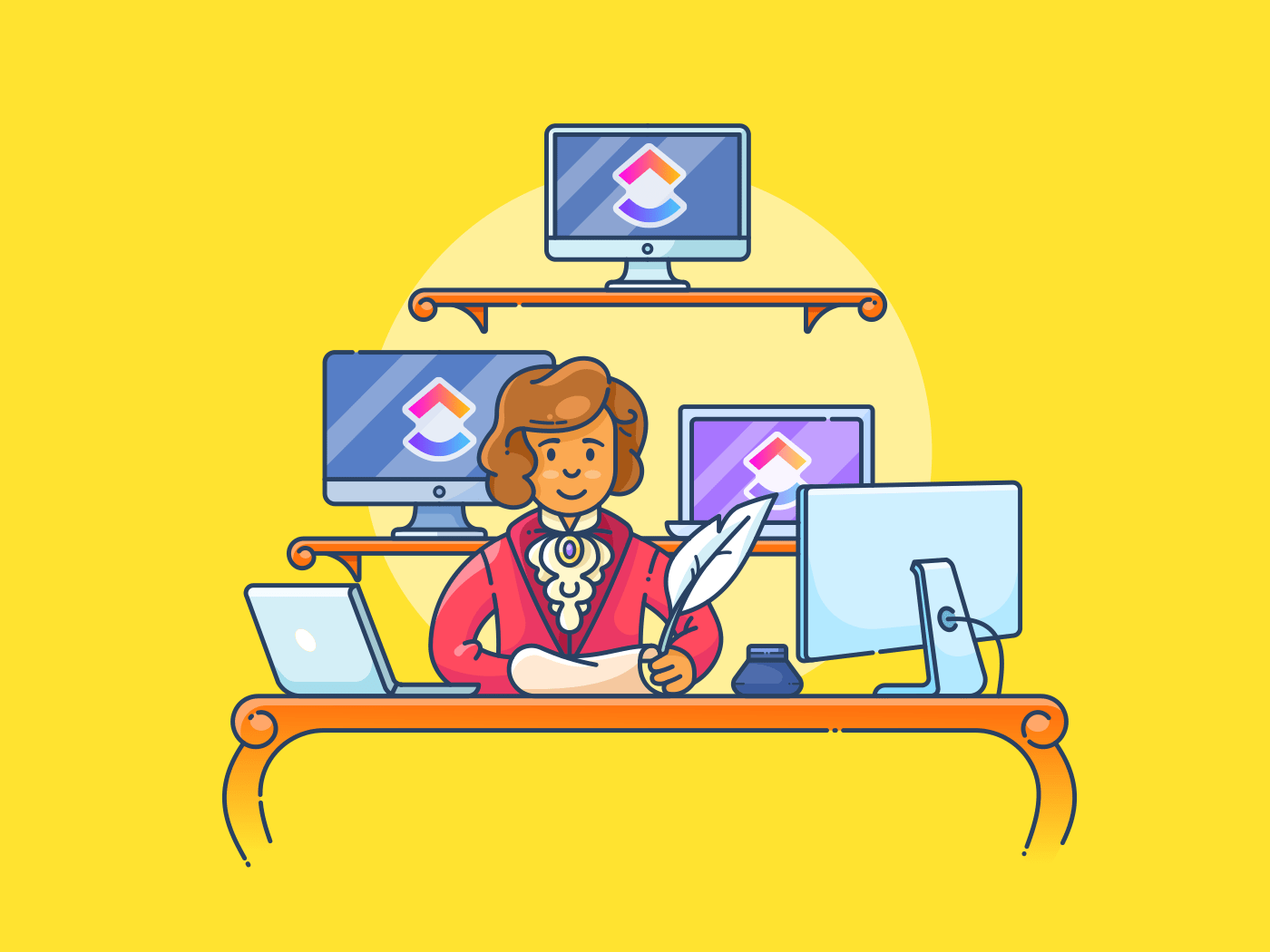

After 24 hours, we forget up to 40% of the new information we learn. But we can retain up to 100% of our memory with a simple tool: note-taking.
In a 2021 study in the Journal of Experimental Psychology, participants who took notes could recall information better than those who didn’t or took pictures of lectures on their phones. When we don’t attempt to retain information, our memory of that experience gradually declines until we remember little—or nothing—about it.
Luckily, note-taking helps with memory retention by actively engaging with the material to connect new knowledge and past experiences. 🔗
The most effective note-taking strategy for you depends on the type of content or the information you’re gathering, how you assess it, and the time you have to retain it.
Your process should allow you to take productive notes in any environment and encourage you to learn and retain information efficiently. ClickUp curated a list of some tried-and-true strategies for improving virtual and in-person note-taking and making it more productive.
Read on to learn about the five best strategies to help anyone take better and more productive notes, whether listening to a podcast, following along during a lecture, or watching a documentary.
We take a deep look at more than a dozen of the best free note taking apps of 2022 and break down the capabilities and weaknesses of each.
1. Try a Traditional Note-Taking Method

Traditional note-taking methods, like the Cornell and Boxing methods, are two of the most productive and widely used. The Cornell method, developed by Walter Pauk in the 1950s, breaks up notes into three parts: the cue, notes, and summary. These sections help to improve your ability to memorize and retain information in an organized fashion.
The Boxing method groups different pieces of information into small boxes and labels them or includes a broader idea at the top of each box. This method keeps things concise and works well with digital notes.
It’s easier to reorder and move the sections after lessons. Other traditional methods, such as bullet journaling or the outline method, can also be effective.
2. Leverage AI Tools to Take Notes

AI note-taking tools create an easy path toward giving any learning experience your undivided attention. You can wholly contribute to lessons and meetings and get as absorbed as you want without so much tedious writing.
On the surface, AI tools appear to transcribe words into notes simply. But they also erase the potential for human error, providing searchable time-stamped transcripts, transforming ideas into trackable tasks, and making lessons available in numerous languages.
Stay organized and stand out with fantastic meeting notes. Check out our free meeting note templates and never have to ask an embarrassing follow-up question again.
3. Shorten Everything in Your Notes

Using shorthand letters and abbreviations are pivotal to faster note-taking. Shorthand allows you to gather a lot of information quickly.
While shorthand letters may be too tasking to implement, abbreviations work perfectly. There are three abbreviation techniques when writing in short form: using the first few letters of a word, removing most of the vowels from a word, and using the first letters of phrases to form acronyms.
To make the most of this strategy, try including a glossary in your notebook for later reference.
4. Get Visual With Your Logs

Color coding is an effective way to recall specific information in notes. This method uses colors to highlight important information and speeds up your reading process as you easily interact with these colors to find particular points in your notes.
Get even more visual when you use tools like ClickUp Mind Maps and sketch notes. A mind map is an illustrative tool, like a tree, that groups information around a central topic.
Sketch notes are visual notes which use calligraphy, drawings, and elements like clouds and boxes to capture ideas on a page.
Organize your entire work life in a single place with ClickUp’s Notepad, checklist, and task management platform.
5. Take Notes Collaboratively

Writing collaboratively in groups or with partners can help everyone receive multiple perspectives of a lesson and critically assess ideas in a subject. In collaborative note-taking, tasks are divided so each person can take up a different element of focus—whether the summary, cue, or actionable ideas.
Collaborative note-taking can enhance interaction with the subject and creates space for better, deeper questions. This style of note-taking can also help group members keep track of what happened during a learning activity for reference later.
Take Your Note-Taking Skills to the Next Level
There are many different ways to take notes, and the most effective strategies depend on the circumstances and goals you want to achieve.
Whether you need to take notes for work or school or simply looking for better ways to jot down quick notes and write detailed meeting notes, ClickUp can help you become an avid note-taker with its robust yet flexible note-taking features like Notepad, ClickUp Docs, and Whiteboards.
Integrated into the project management platform, these note-taking features make it possible for you to take and store notes along with your work. Not to mention, they’re fully customizable—format and organize your notes however you want to meet your project needs and personal preferences.
Try ClickUp for free today, and take your note-taking skills to the next level!
Guest Writer:



